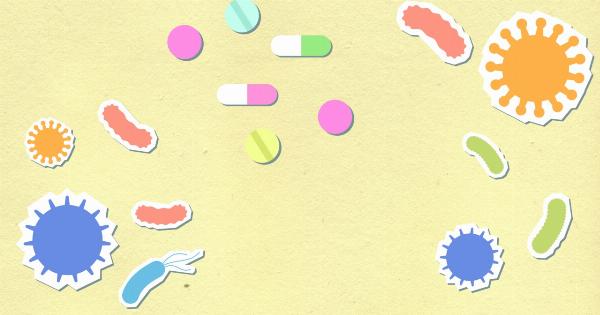Gaucher’s disease is a rare genetic disorder that affects only one in 50,000 to 100,000 individuals.
This disease is caused by a low level of an enzyme called glucocerebrosidase, which makes it difficult for the body to break down a fatty substance called glucocerebroside. Over time, this leads to the accumulation of glucocerebroside in the body’s organs and tissues, resulting in a range of symptoms that vary from mild to severe.
In this comprehensive guide, we will delve deeper into the causes, symptoms, and management of Gaucher’s disease.
Causes of Gaucher’s Disease
The primary cause of Gaucher’s disease is a genetic mutation that results in a deficiency of the enzyme glucocerebrosidase. There are three different types of Gaucher’s disease, depending on the severity of the enzyme deficiency:.
Type 1 Gaucher’s Disease:
This is the most common type of Gaucher’s disease.
Individuals with type 1 Gaucher’s disease have a partial deficiency of the glucocerebrosidase enzyme, which means that they produce some, but not enough, of the enzyme to break down glucocerebroside. Symptoms of type 1 Gaucher’s disease are usually mild and can include enlarged spleen and liver, anemia, bone pain, and fractures.
Type 2 Gaucher’s Disease:
This type of Gaucher’s disease is rare and is usually fatal in early infancy.
Infants with type 2 Gaucher’s disease have a total deficiency of the glucocerebrosidase enzyme, which means that they do not produce any of the enzyme to break down glucocerebroside. Symptoms of type 2 Gaucher’s disease can include brain damage, seizures, and respiratory problems.
Type 3 Gaucher’s Disease:
This type of Gaucher’s disease is less severe than type 2 and can present in early childhood or even later in life.
Individuals with type 3 Gaucher’s disease have a partial deficiency of the glucocerebrosidase enzyme and can have symptoms ranging from mild to severe. Symptoms can include enlarged spleen and liver, bone abnormalities, and neurological symptoms such as seizures.
Symptoms of Gaucher’s Disease
While the symptoms of Gaucher’s disease can vary from person to person, some of the most common symptoms include:.
Enlarged Spleen and Liver:
The accumulation of glucocerebroside in the organs can cause them to become enlarged, resulting in abdominal pain, nausea, and vomiting.
Anemia:
The buildup of glucocerebroside in the bone marrow can interfere with the production of red blood cells, leading to anemia. Symptoms of anemia can include fatigue, weakness, and shortness of breath.
Bone Pain and Fractures:
The accumulation of glucocerebroside in the bones can cause them to become weak and brittle. This can lead to bone pain and an increased risk of fractures.
Neurological Symptoms:
In some cases, the accumulation of glucocerebroside in the brain can cause neurological symptoms such as seizures, difficulty walking, and developmental delays.
Management of Gaucher’s Disease
While there is no cure for Gaucher’s disease, there are several treatments available to manage the symptoms of the disease:.
Enzyme Replacement Therapy (ERT):
This is the most common treatment for Gaucher’s disease. ERT involves receiving regular infusions of the missing enzyme glucocerebrosidase.
This can help reduce the accumulation of glucocerebroside in the body and improve the symptoms of the disease.
Substrate Reduction Therapy (SRT):
SRT involves taking a medication that reduces the production of glucocerebroside in the body. This can help reduce the accumulation of the substance in the body and improve the symptoms of the disease.
Bone Marrow Transplant:
In severe cases of Gaucher’s disease, a bone marrow transplant may be necessary.
This involves replacing the patient’s bone marrow with that of a donor who does not have Gaucher’s disease, which can help produce the missing enzyme glucocerebrosidase.
Surgical Intervention:
In some cases, surgery may be necessary to remove an enlarged spleen or repair bone fractures.
Lifestyle Modifications:
Patients with Gaucher’s disease should avoid contact sports and other activities that can increase the risk of fractures. They should also follow a healthy diet to maintain proper nutrition.






























